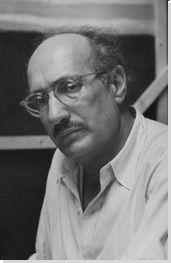Artist
Mark Rothko (1903 - 1970) was an Abstract Impressionist painter (although he rejected classification) famous for his paintings of large colored rectangles. These reduced color and form to their most basic, and allowed for a wide range of interpretations from the viewer. He was influenced by mythology, inspired by its use of symbols to represent deeper meanings. Originally, Rothko painted more "normal" works with obvious human figures, but eventually moved towards more abstract shapes. Rothko himself said, "It was with the utmost reluctance that I found the figure could not serve my purposes....But a time came when none of us could use the figure without mutilating it." (https://www.nga.gov/feature/rothko/myths1.shtm) For him, all the meaning of the figure is packed inside the rectangles. He was also inspired by philosophy, particularly that of Nietzsche. He created a total of 836 paintings in his lifetime.


 rectangle, and a blue rectangle on a black background. Some parts of the rectangle are more vividly colored than others, depending on how many times I drew over that spot. I used Paint.NET(a drawing program like Photoshop) and a drawing tablet to create this image.
rectangle, and a blue rectangle on a black background. Some parts of the rectangle are more vividly colored than others, depending on how many times I drew over that spot. I used Paint.NET(a drawing program like Photoshop) and a drawing tablet to create this image.
